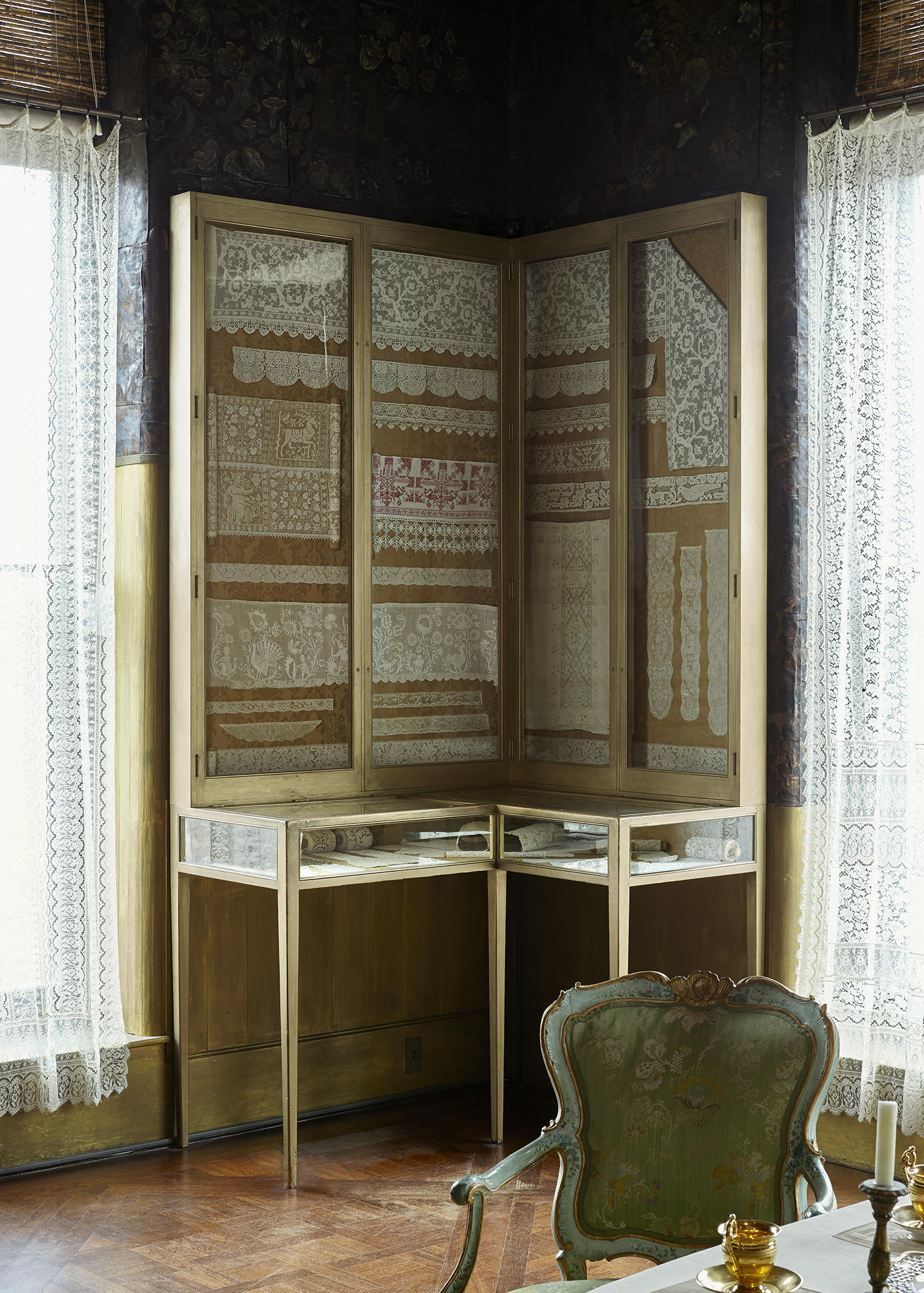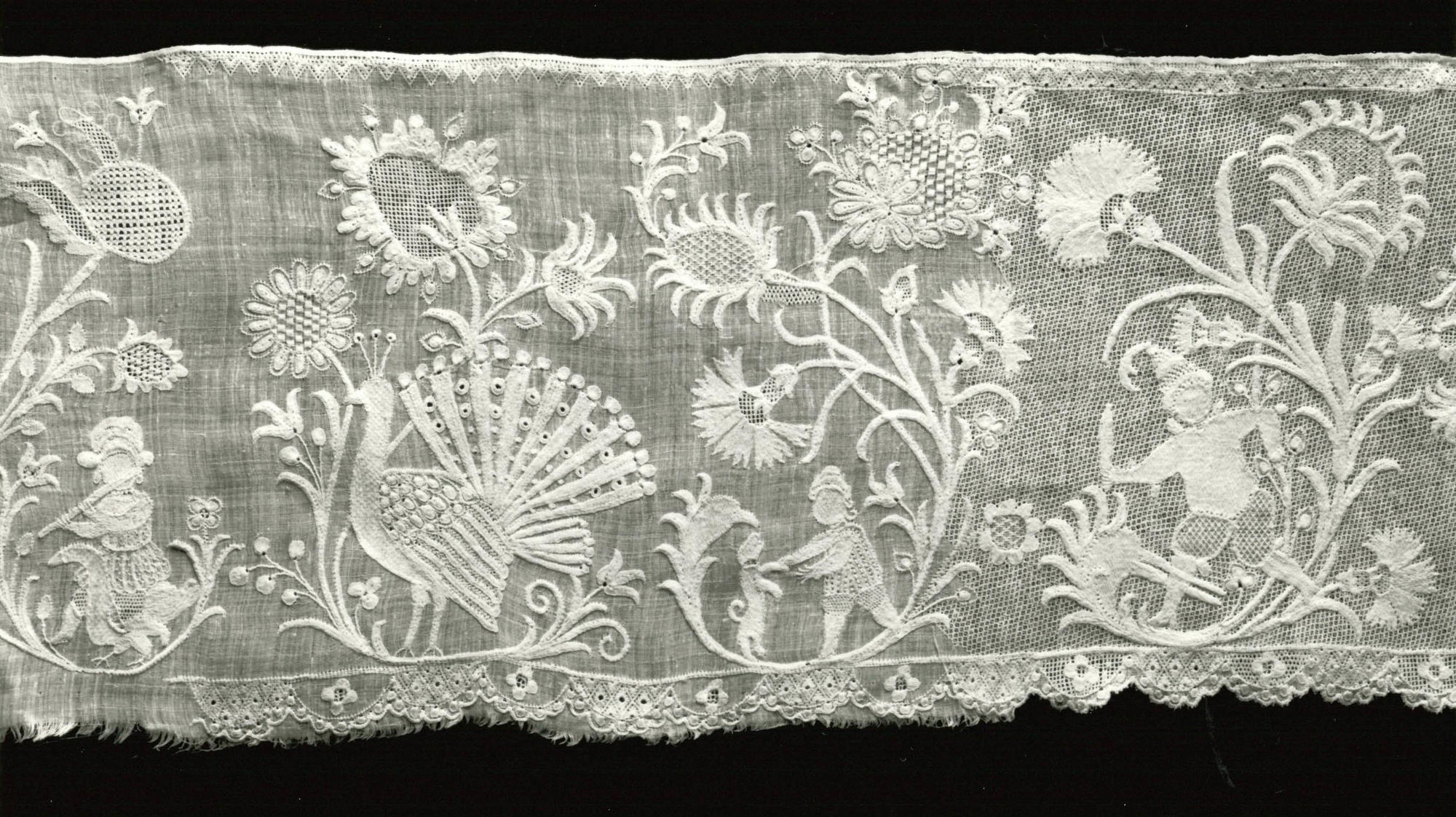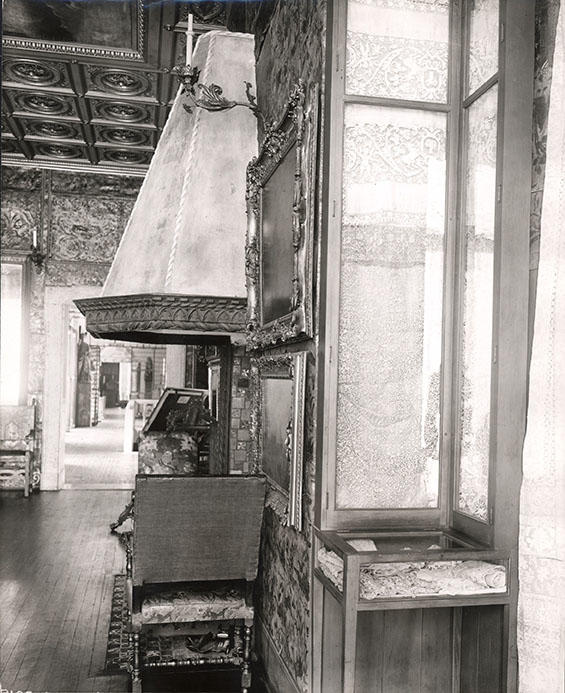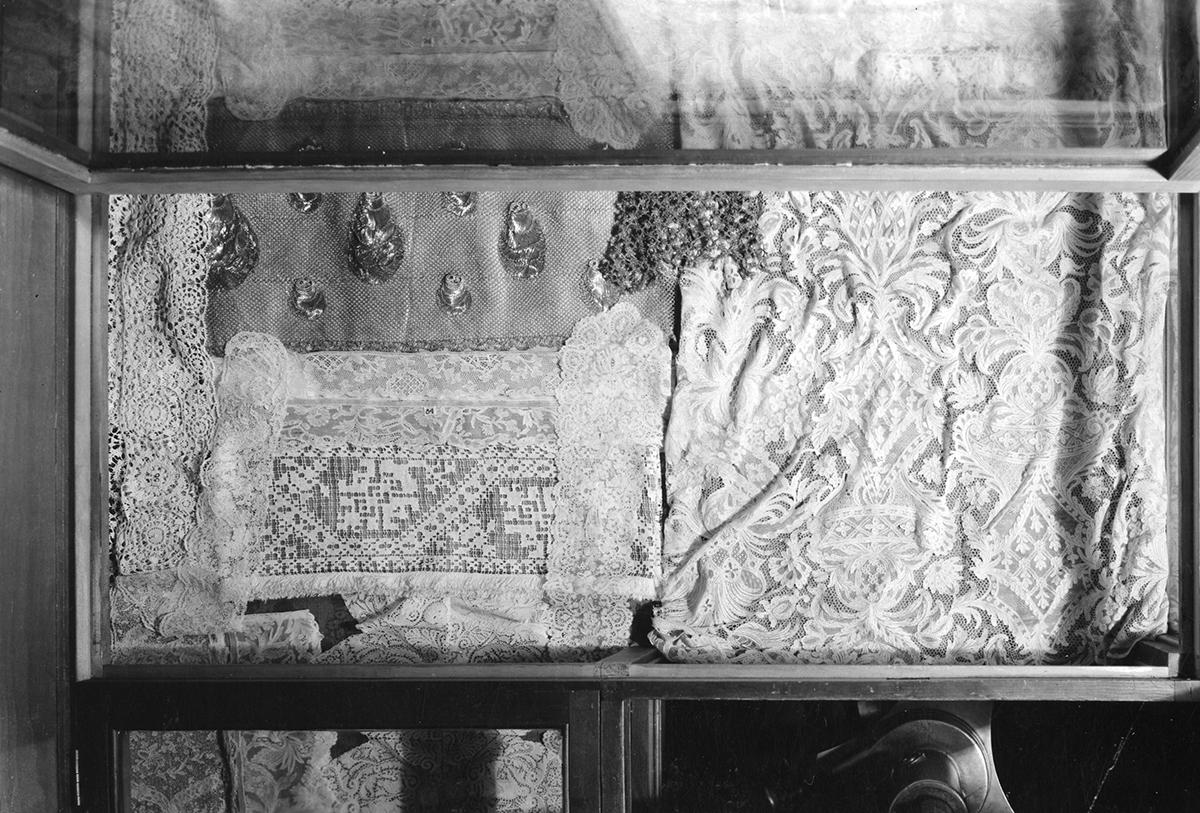Walking into the Veronese Room, visitors’ eyes are always drawn to the corner, to Isabella Stewart Gardner’s two cabinets of lace. She filled these cabinets to the brim with a variety of textiles. Italian, Belgian, Spanish, and French lace created a chaotic sea of delicate white fabric.

The Veronese Room Lace Case, 2016
Isabella Stewart Gardner Museum, Boston. Photo: Sean Dungan
During Isabella’s lifetime, the cases featured almost all of the 177 laces in the collection. Due to their light sensitivity, only a small portion of them are now on display, but they remain a testament to Isabella’s love of the material and her careful curatorial decisions.
Growing up in the Stewart family, Isabella was closely familiar with the textile industry. Her father, David Stewart, originally made his money in the trade of Irish linen. Throughout her museum, Isabella’s shared her father’s knowledge of textiles is apparent, particularly in her choice of laces.

German, Northern Germany, Lace Border, 18th century. Cotton tabby, drawnwork, 198.1 x 25.4 cm (78 x 10 in.)
Isabella Stewart Gardner Museum, Boston (T25bai126). See it in the Veronese Room.
Gardner’s lace collection is distinguished by its sheer variety, both in technique and provenance. Isabella frequented the stores of dealers in France, Germany, Italy, and New York. Her travel diaries note specific instances of purchasing laces and highlight her keen eye for finding quality pieces. In her 1884 travel diary from Venice, Isabella writes: “Arrived off Venice abt. 7 AM...Went for Italian teacher, then to Lido...To Accademia...bought lace…” as well as: “Jesurum is the only place for really good lace. He is dear & has ‘fixed price,’ but very good.” Twenty laces have been identified as purchases in the 1880s and 1890s from the Venetian lace dealers M. Jesurum & Co., Melville and Ziffer, and Moise Dalla Torre & Co.

Michelangelo Jesurum’s lace-making workshop opened in 1870 in Venice
Jesurum, Venice
The provenance of many of the laces in the collection is unknown, but the lace altar frontal in the Spanish Chapel was a birthday gift to Isabella from her friend Dodge Macknight. Clearly, Macknight knew Isabella’s affinity for laces, because he notes in the letter accompanying the frontal that, “I would rather give it to you than sell it to anyone else.”

Spanish, Alpujarra, Lace Altar Frontal with eight-petaled blossoms and carnations, about 1550-1600. Plain weave linen with drawnwork
Isabella originally displayed this piece of lace in the Spanish Chapel. It is now kept in storage to protect it from light damage.
Isabella purchased several pieces with unusual provenances, such as a French lace panel that was said to have belonged to Marie Antoinette.

French, Lace Panel, 1675-1700. Linen, needle lace
Isabella thought this lace panel belonged to Marie Antoinette. See it in the Veronese Room
As Adolpho S. Cavallo—former Curator of Textiles at the Museum of Fine Arts, Boston—stated in his 1981 examination of the textiles at the Isabella Stewart Gardner Museum, “Exercising unusual skills of selection, [Isabella] chose from among thousands upon thousands of examples available to her some two hundred pieces of lace and white openwork embroidery whose varied character, high quality, and broad representation of the history of European lacemaking must excite the admiration (and envy) of every textile collector and the delight of every visitor to the museum.”¹
Although the majority of early 20th century American museums collected lace, Isabella was unique in her ability to select the most exquisite pieces. Her unusual knowledge of fine lace made her museum a haven for lovers of textiles—a sanctuary we are proud to preserve to this day.
You May Also Like

Explore the Museum
Veronese Room

Explore the Collection
Italian, Venice, Lace Flounce and Pair of Cuffs, 1650-1700

Read More
Raphael Room Textile Restoration

